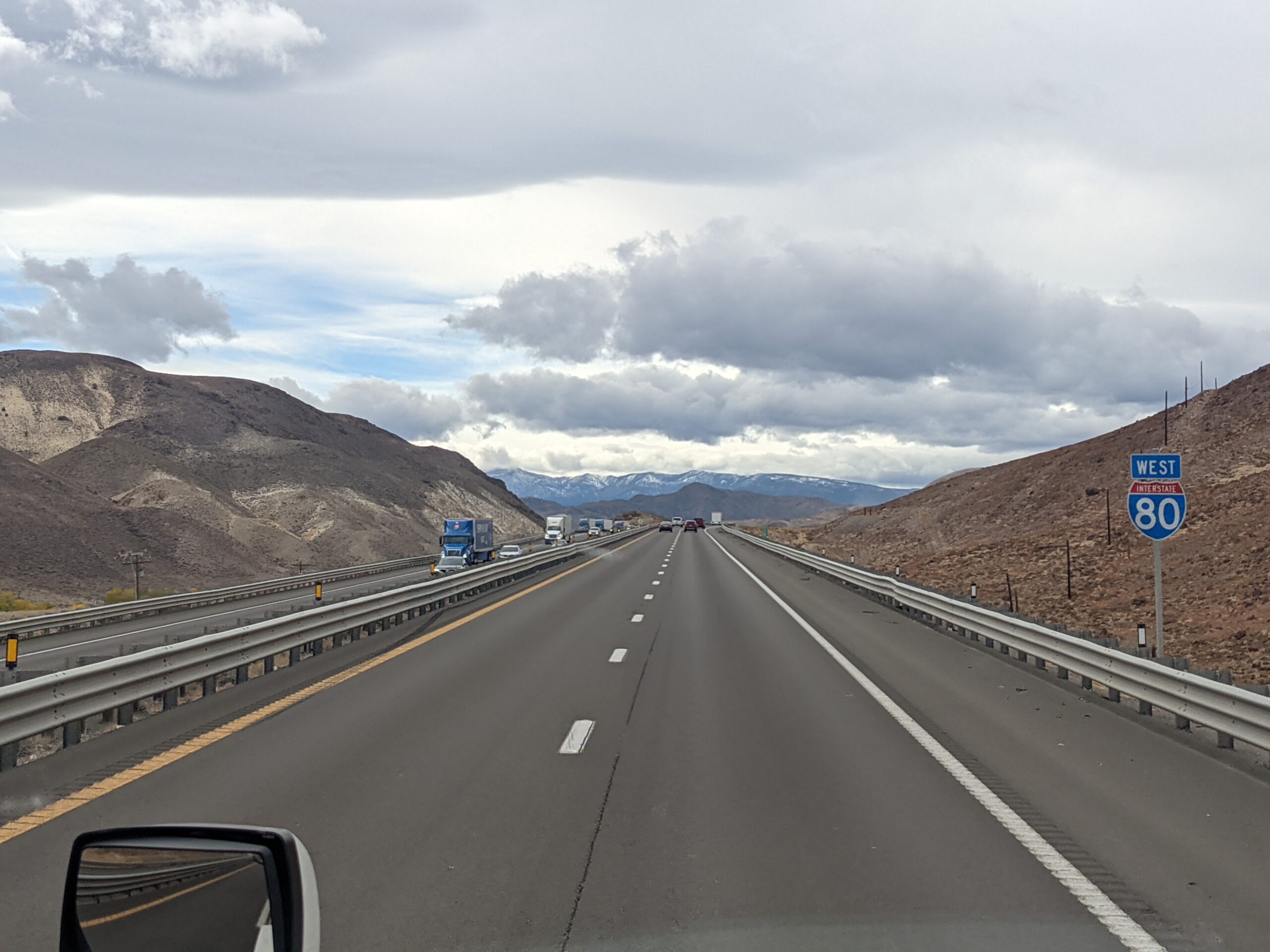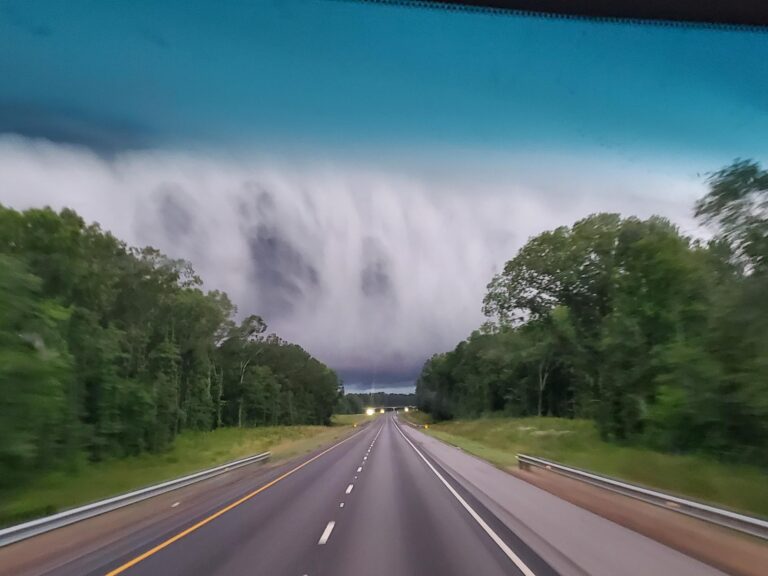Staying Safe on the Road: Tips for Avoiding Close Calls with Your Truck
Driving a semi-truck over a hundred thousand miles a year on the nation’s highways will naturally lead to close calls with your truck due to unexpected circumstances. What do I mean? Stuff happens out there on the road and some of it is next to impossible to plan for. It will just happen. In my short driving career of 5 years, I can count several instances where external events almost caused me to make contact with other vehicles or simply put crash.
The Tire of Death
In one instance I was driving west on I-80 and a full-size semi-truck tire came flying my way. A truck traveling in the opposite direction somehow lost its tire with rim attached. It quickly bounced across the highway and headed straight for my truck. As soon as I spotted it, I slowed down. It went flying on the right side of my truck and I barely missed it as it bounced off into the woods. If that tire had hit my windshield, I may not be here today to write about it. This is just one example of the dangers truck drivers face out there every day. You have to stay alert at all times even when are on your tenth hour of driving for the day. It is vital.
Drivers in a Rush
The largest danger element while driving a truck will be other traffic nine times out of ten. You can control your own driving, but you have no effect on the dangerous driving habits of other people in your immediate vicinity whether they are in a car or an 80,000 LB truck and trailer like yourself. I have seen bad drivers in about every type of vehicle you can imagine. The common theme is they are either in a rush or distracted. Even worse they may be both. Too often either of these factors can result in a catastrophic outcome.
Following Distance is Everything
One way to increase your chances of not getting into an accident is to leave plenty of space between yourself and the vehicle in front of you. This is known as following distance in trucking. Look at it this way. The more following distance you have the greater amount of time you will have to react with your truck in order to avoid any road hazards that may lay ahead of you. These can be any number of things including road debris, vehicles involved in an accident, wild animals, people crossing or standing on the highway, lost freight such as mattresses falling off a pickup truck or you name it. If there is one thing for certain it’s that you are going to come across situations where you will have to either brake or adjust your driving accordingly and in a fast manner. Be careful when changing lanes rapidly though because if anyone is in that left lane running all the way to seventy feet back you are going to side swipe that vehicle. All the while trying to avoid a mattress that fell off a pickup truck several hundred feet in front of you. Never change lanes swiftly unless you know you have enough clearance for your truck and trailer. If you keep your following distance to a maximum, you should have enough time to react to an obstacle in your way in a safe manner.
Drivers Not Staying in Their Lane
Sometimes drivers will lose their lane integrity for whatever reason. This means they are wondering out of their lane and into yours. I have seen this multiple times and it is always an eye opener. You will be forced to increase the space between you and the other vehicle. You may have to slow down or start to drive partially in the emergency lane in order to avoid contact. The first course of action when this occurs is to always sound your air horn and get the other driver’s attention as soon as possible. That is what it is for. The air horn is not to let out your frustrations as some drivers like to use it, but it is there to help avoid a last second catastrophic event or in other words making contact with another vehicle on the road.
Distracted Drivers are Deadly
I have watched four wheelers the term used by truck drivers to describe normal cars and pickup trucks staring at their phone while driving down the road. Usually, these drivers are heavily distracted and may be driving slower than the speed limit in the right lane while enjoying their Netflix. It is really unbelievable, but I have also seen truck drivers watching a movie on their or tablet while passing them also. Driving with a visual distraction is the last thing you want. If you are glancing at a screen longer than a second, it is too long so it is best to keep it at a minimum. Distracted driving is a recipe for disaster.
Driving the Wrong Way
It is common to be driving especially at night and get an alert on your GPS about a driver driving the wrong way down a highway in your vicinity. This always makes me curious, but I would venture to guess most of these people had one too many drinks down at the local bar before deciding to hop in their car and play suicide with the opposing traffic.
Wildlife Encounters
You will run across wildlife crossing the highways quite often depending on where you drive. Possums and deer are usually the more common ones. One night I was driving outside of Atlanta on a heavily wooded highway and a mother dear crossed right in front of my truck. The baby deer following stopped right before I hit it, so I drove my truck in between the two deer. I glanced over to my left and saw how scared that baby deer was. I will never forget the look on that deer’s face. I am glad I did not hit them. If it were any closer, I would have run both over. I have yet to run over a deer, but I have hit many birds. I have taken out birds of all sizes and it is never a good feeling but there is not much you can do about it when they fly right in front of your truck. I have also squashed possums. This usually occurs at night when they scurry onto the road right in front of the truck. They are simply trying to cross the road until a giant truck ruins that plan for them. No driver can avoid killing animals from time to time and this is one area of trucking that I wish was different. Harming wildlife is not my idea of fun.
Losing Traction with Your Truck
Another way to have a close call on the road is for either your truck or trailer to lose traction due to the weather. This can happen easily in snow, rain or even ice on the road. There is nothing scarier than not having control of your vehicle. The best course of action when this happens is to let off the accelerator and keep the truck and steering wheel straight while traveling in the same direction if at all possible while slowing down. Once your truck regains its traction start hitting the brakes lightly. After that you will want to find a safe place to park or pull off if you are not impeding traffic if the road conditions are unsafe to keep driving on.
Random Encounters Summary
This article only touches on some of stuff you may encounter out there. Stay alert, do not rush, and only drive as fast as it is safe to do so, and this will help limit the number of bad interactions you may encounter out there on the road. You cannot control everything going on out there, but you can control your own driving habits.



